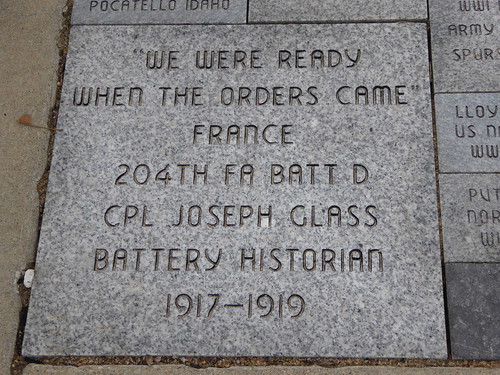
Of course there was a lot of just being together for the
first time since July, but we really packed in the touring too.
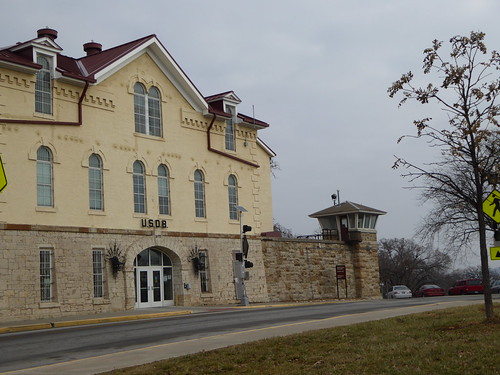 |
| This was the former prison at Ft. Leavenworth. Look at that guardhouseat the end of the wall. |
It’s much more than the prison that is the reason for its fame, and as it turned out, we never did see the prison complex that is used today. It’s at a far end of this large military installation. We did, however, enter the building that WAS the prison years ago although today it houses, among other much more gentle things, an art framing studio. The door to the building, however, is a very solid reminder of what once was located where we stood. Very solid.
We passed the military cemetery too, rows and rows of reminders that the men and women who walked these
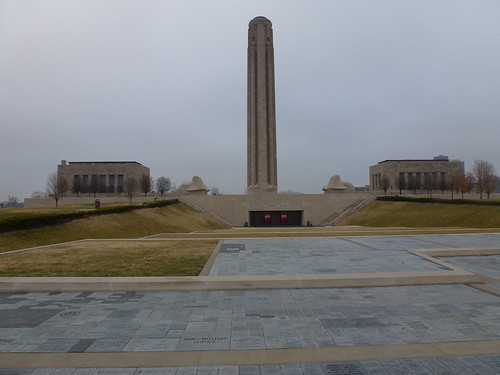 |
| National World War I Museum The Liberty Tower stands 217 feet high Notice the giant sculptures on either side of the tower. Each one is a Sphinx, eyes covered |
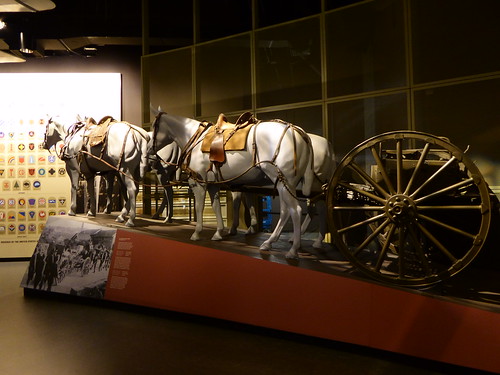 |
| Transportation |
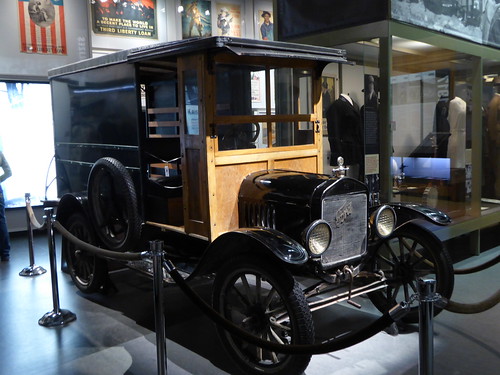 |
| ye old Ford |
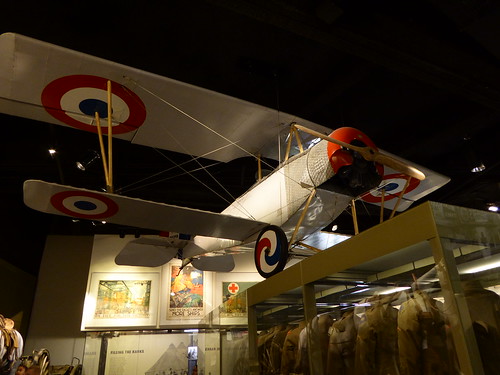 |
| a fighter plane |
 |
| Some of these insignias are still used in today's Army |
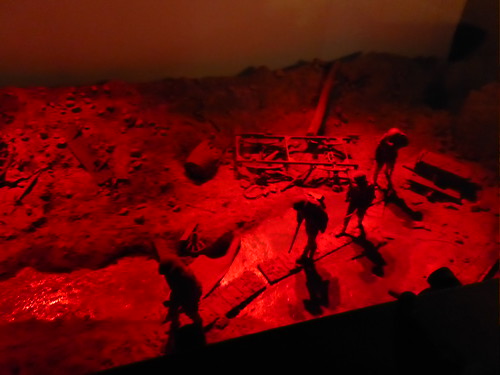 |
| This diorama was used in conjunction with a terrific video presentation |
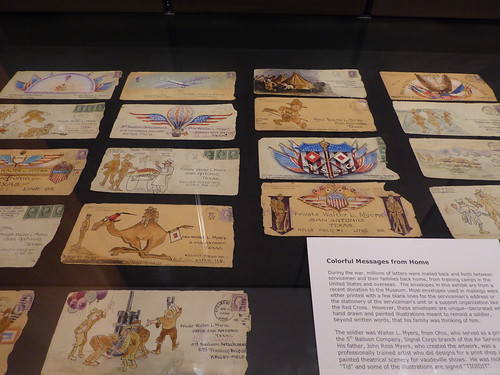 |
| Aren't these marvelous! Decorative envelopes become art work bringing letters from home to cheer the weary soldier at the front |
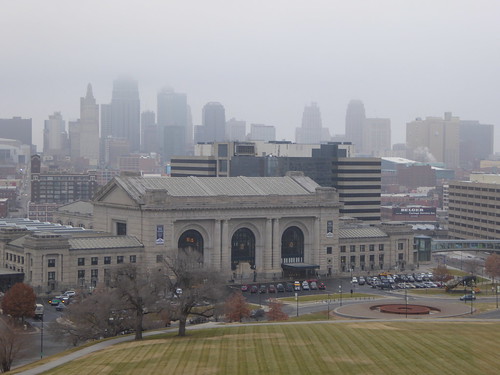 |
| A foggy day in Kansas City from the Memorial Court |
Fundraising for the museum's construction began in 1919 soon after the end
of the war. Money came in quickly. Groundbreaking and dedication was in 1921 and
attended by luminaries from around the world including then Vice President
Calvin Coolidge. Present were 60,000
American Legion members and a Kansas City
haberdasher named Harry Truman.
The building is an example of Egyptian Revivalist
architecture, and looming overall are two colossal sphinx-like statues. They are on the Memorial
Court , and their symbolism is very moving. To give you a better idea of size, each
weighs 615 tons. They epitomize the mood
of the museum, built soon after the war and remembering the tremendous
sacrifice so many made.
One sphinx is named “Memory.
It is on the southwest side of the court facing east toward Flanders
Field. It hides its head to forget the
pain and suffering of war.
On the southeast side, “Future” covers its head and faces
west. It covers its head to symbolize
the cynicism and skepticism of things to come.
These sculptures were dedicated in 1925, and certainly are
as symbolic in today’s world as they were so soon after the War to End All
Wars.
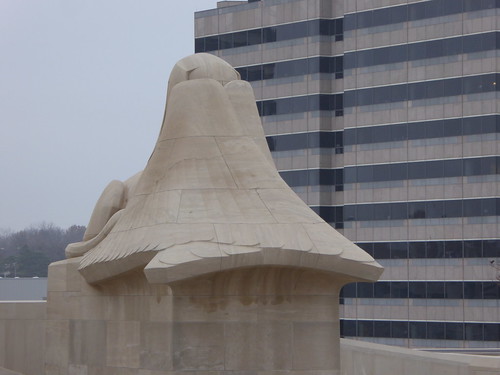
Rising above the Memorial Court
is the Tower. Into the base of the tower are sculpted four Guardian Spirits
representing Honor, Courage, Sacrifice, and Patriotism. Each includes a
symbolic element. Honor is characterized by a
wreath; Courage by a helmet; Patriotism by a civic crown; and Sacrifice by a
winged star on the forehead. Each figure
also carries a sword, representative of necessary military guardianship. Believe me, it is awesome, quite moving, and
very sad.
There is so much more to the museum including, as you enter,
a glass bridge through which you see fields of poppies, and you are, of course
reminded of John McCrae’s 1915 poem which begins:
“In Flanders Fields the poppies blow,
Between the crosses, row on row
That mark our place; and in the sky
The larks, still bravely singing, fly
Scarce heard amid the guns below.”
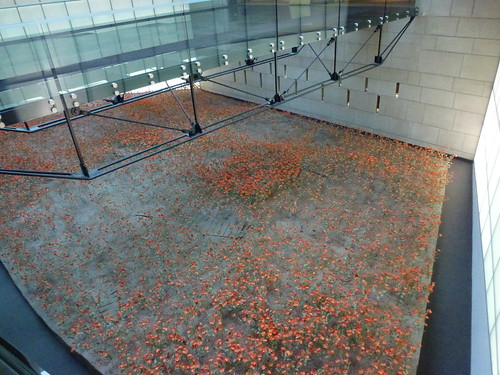 |
| The glass bridge over the field of poppies This is how you enter the museum It certainly sets a solemn mood. |
It’s a museum to visit often, and our short time did not give us an opportunity to appreciate all it has to offer. But should you visit
All work and no play makes Jack a dull boy, so with all the things to do and see in Kansas City, we had to have a celebratory dinner at a great place, so off we went to Cooper’s Hawk, right in the middle of a city celebrating the season. I’ll write about
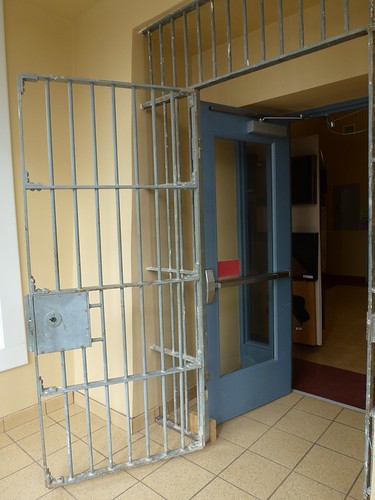
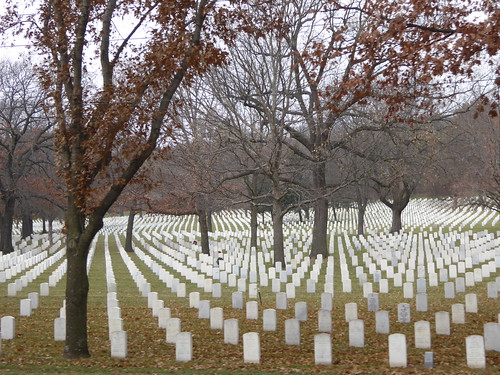
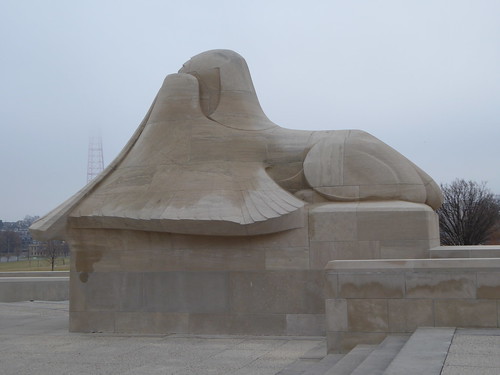
No comments:
Post a Comment